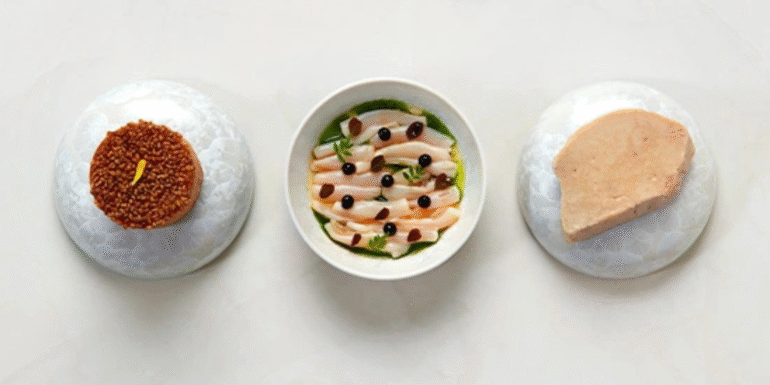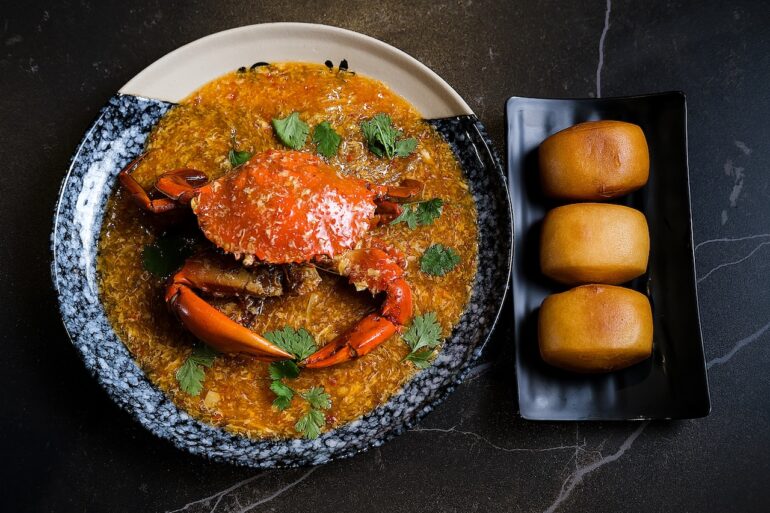In the menu he presented as guest chef, he showcased a dish that reminds him of what his mom used to cook for him.
Chef Zor Tan, who helms Born — a one-Michelin-star restaurant in Singapore — may be far from his home in Malaysia, but at Red Lantern he brings with him the flavors and memories of his childhood. In the menu he presented as guest chef, he showcased a dish that reminds him of what his mom used to cook for him.
“The rice with crab is congee style. I used rice to absorb all the flavors and added the crab fat. I also added Alaska King Crab so you have two different textures,” he said. “This is very heartwarming because my mom used to cook it for me.”
He grins from ear to ear as he explains that his mother’s version used less crab and was often filled with other seafood, especially prawns. For his Solaire execution, he prepared it as a risotto, making it creamier and adding kombu for flavor. On top of the risotto, he placed strips of fish maw cooked in bak kut teh.
“I’m Malaysian, so I grew up with pork rib soup as well. I wanted to bring that flavor here,” he said. Tan also incorporated bak kut teh notes into another dish in the preview six-course meal for the media. He served melt-in-your-mouth A5 Wagyu steak strips with soubise (pureed onion) and maitake—also known as Hen of the Woods—braised for an hour in bak kut teh soup.
He added, “The onion puree was slow-cooked and then finished with some cream to give it a bit of sweetness. The sauce has a little bit of char flavor, too. We want something like sweet and savory playing together.”
Related story: Michelin-starred chef Napol ‘Chef Joe’ Jantraget ignites The Peak with his modern Thai cuisine
Related story: Why you shouldn’t miss these dishes from the two restaurants that skipped Michelin Guide’s ceremony
These are the flavors he brings as the weekend guest chef at Red Lantern in Solaire Resort Entertainment City in Pasay from November 14 to 16. The collaboration took a year to bring to life, resulting in an eight-course meal specially prepared for Red Lantern. It also reflects the dishes he serves at Born in Singapore, ranked No. 25 in Asia’s 50 Best Restaurants 2024.
The key difference lies in how he embraced the local pantry. He professes so much love for crab fat that he even knows it’s called taba ng talangka in Filipino. He also enjoys pili nuts and local abalone, and whenever he visits the Philippines, he takes these ingredients home with him.
“I tried to source locally. Otherwise, I’m going to carry a lot. Only three of us came here,” he said.
For Tan, cooking with local ingredients is not only practical but also aligned with his culinary philosophy.
“The first thing I want to show is the DNA of the restaurant,” he said. “But I also want to incorporate local ingredients that I can get easily and fresh. That’s something I really researched.”
The abalone, which was served with jade fungus and a chicken fat sauce infused with Sichuan peppercorn, turned out to be his favorite creation. The dish offered a beautiful contrast in textures: the abalone soft and silky, while the jade fungus was springy with a slight crunch. The chicken fat sauce at the bottom packed a lot of flavor yet finished with a clean, delicate note.
“I serve this dish in my restaurant, but it’s with monkfish. Monkfish is our signature dish. I used local abalone to replace the protein. But the flavor and the presentation are almost like what you can find there. It looks very simple. That’s what I’m after—not too much garnish, not too much flour. It’s just the ingredients shining by themselves,” he said.
He opened the menu with a palate refresher of kanpachi, ginger, and watermelon radish. The ginger was delicately carved into tiny blossoms, and the kanpachi offered a firm, buttery texture with a clean, lightly sweet flavor. Inspired by Yishun or Lunar New Year, the dish was finished tableside with a gentle “snowfall” of pear powder.
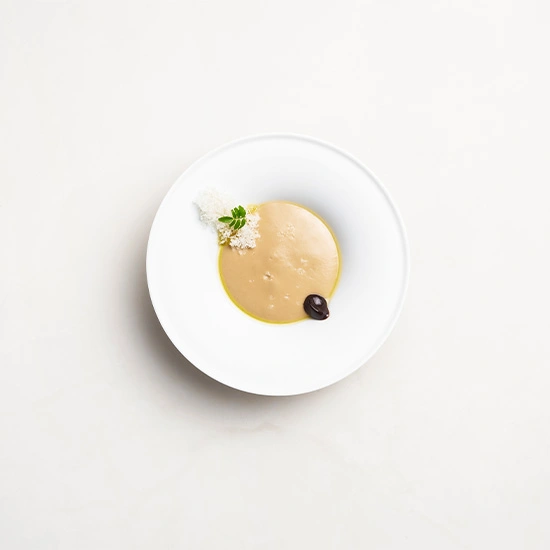
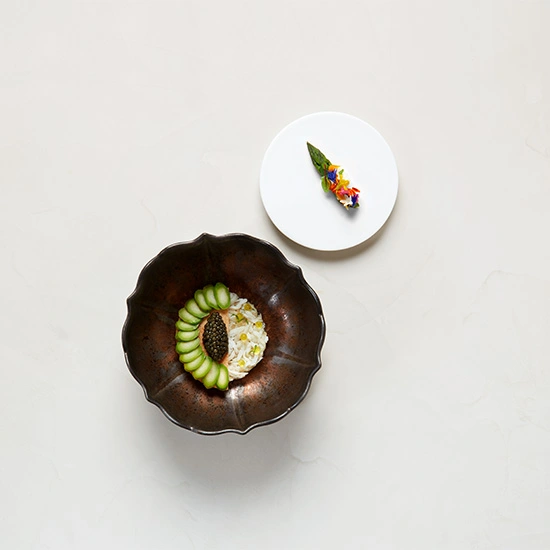
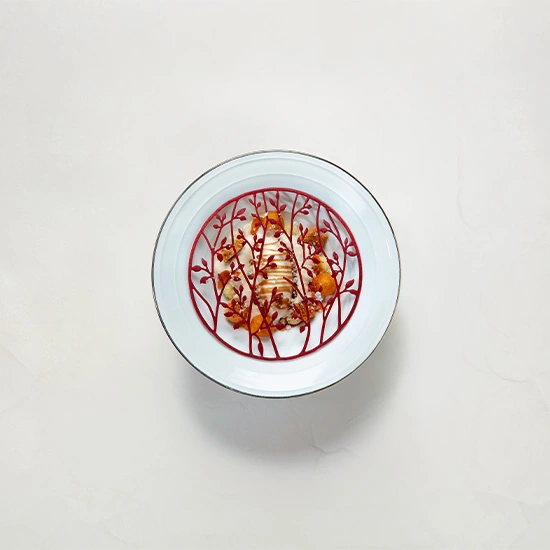
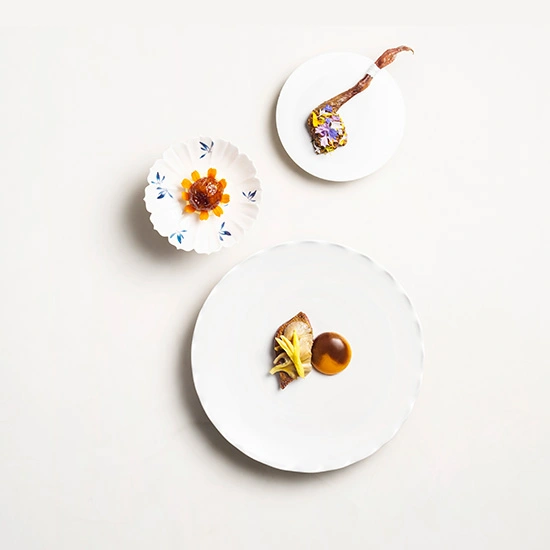
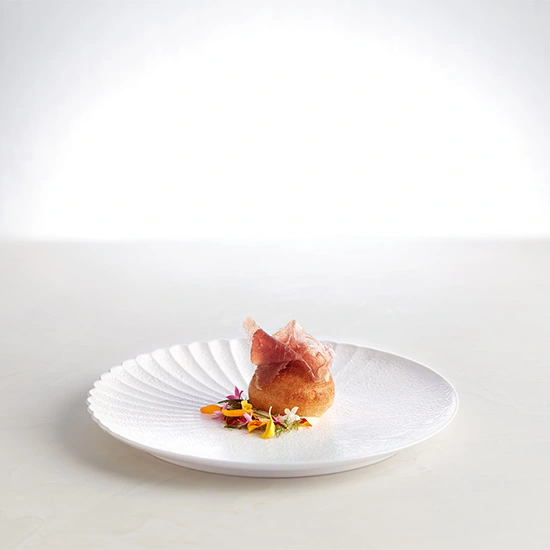
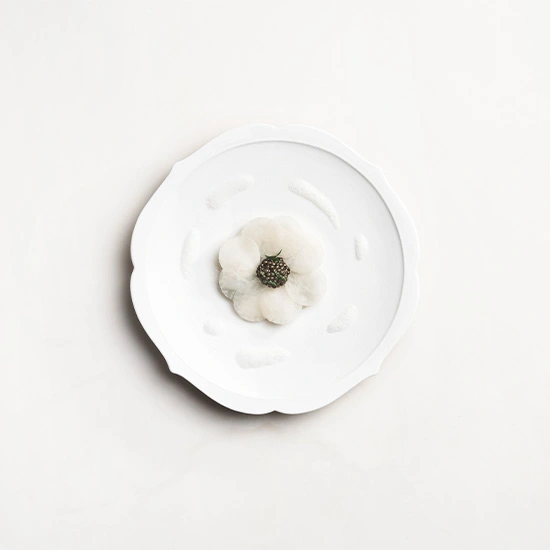
Tan followed with an airy fried bao filled with Wagyu, resting on an oyster emulsion and finished with caviar on top. The bao was meticulously deep-fried at a controlled temperature so it would hold its shape and stay perfectly airy.
He ended the menu on a high note with a sweet potato purée that melded perfectly with sea salt ice cream and oolong chantilly.
“When you think about sweet potato, you think you have it every day. But then it comes to you in a different texture, different form, and it totally changes your mindset,” he said. “I like my dessert not only sweet but a little bit savory and salty as well—make it a little more interesting so you won’t feel like you’ve had too much of it and feel very heavy. Something with saltiness to bring back the taste profile as well.”
The dishes were paired with four non-alcoholic wine alternatives, each selected to complement the flavors of the menu. The final pour delivered a sweet, fragrant finish with its blend of lemon verbena, lemongrass, hibiscus, lemon myrtle, licorice root, and peppermint.
Tan’s menu became more than a showcase of Michelin-level technique. It was an exploration of his childhood flavors and culture, reimagined through local ingredients. For three nights at Red Lantern, he brought together two culinary worlds with effortless grace.
This exclusive menu is available only from November 14 to 16, book a table here
Related story: Michelin Guide 2026: 7 Bib Gourmand spots worth every peso
Related story: Can restaurants reject their Michelin stars? These chefs did—and here’s why
Related story: Michelin Guide drops first Philippine list. Here are the country’s starred restaurants

